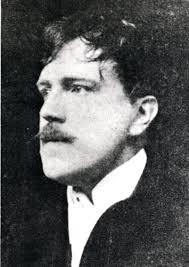Early Life of Robert Murray Gilchrist
He was born in Sheffield, England, and was the second son of Robert Murray Gilchrist and Isabella. He was educated at Sheffield Royal Grammar School and was a renowned writer of his time.
Unlike the plethora of writers who prefer the urbanity in order to thrive, he preferred peace and solitude, thus he lived in the countryside. He was the only one who was both: a writer of the Decadent movement, and a contributor to the Abstainer’s Advocate, a British Journal.
Most of his writings involve characterization of the male gender as one rife with degeneration and decay in character, as was the scene at that time. Although he did not prefer the urban landscape and scenario, his writings allocated him near the English and French landscape. However, he uses that to illuminate the negatives of a patriarchal society and its weakness as a ruling class.
Famous Works of Robert Murray Gilchrist
The influence of his works appears in analyzing his publications and reviews, however, it is hard to locate his early writings among the writers of the Victorian Era. No biography of him exists, no studies were conducted regarding his works.
Clarence Daniel’s book, reminiscences by Hugh Walpole; and correspondence Gilchrist received from prominent writers, and editors, form the content and material for analysis.
His works are famous for a dark and gothic theme, with a counter to patriarchy. In the 1890s, he wrote “Mannered”, which was fiction-gothic horror-themed.
His stories and novels were published in distinguished periodicals such as The National Observer, Pall Mall Magazine, Atalanta, etc. Frequently with the writings of authors such as Kipling, Yeats, Mallarmé, etc.
His publications contained around 22 novels, 100 stories, four non-fiction books, and six collections till the time of his demise. Given his exploration of unusual themes, he often received uneven reviews, however, he was praised for his originality, and descriptive capabilities.
He was, however, criticized for his morbid and horrid themed works. His earliest collection of stories, The Stone Dragon (1894) was widely recognized and some critics recognized his skill.
He later indulged in writing a number of plays, poems, and short stories. Some of his famous works include:
The Abbey Mystery: A Novel. London: Ward, Lock & Co., 1908.
Beggar’s Manor. London: William Heinemann, 1903.
The Chase: A Story. London: F.V. White and Co., 1914.
The Courtesy Dame: A Novel. London: William Heinemann, 1900.
Damosel Croft: A Novel. London: Stanley Paul and Company 1912.
The First Born. London: T Werner Laurie, 1911. Among others.
Legacy
He was mentioned in the “A Century of the English Novel (1925)” which was a major study of Cornelius Weygandt’s, after his death where he was classified as “a minor novelist”
He is often forgotten by scholars, however, his unusual depiction of the horrid and the macabre, and stand against the patriarchy stands out to this day.